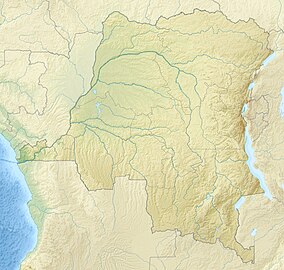Garamba
| Garamba National Park | |
|---|---|
|
IUCN category II (national park)
|
|

An overhead view of the park
|
|
| Location | northeast section of the Democratic Republic of the Congo |
| Coordinates | 4°0′N 29°15′E / 4.000°N 29.250°ECoordinates: 4°0′N 29°15′E / 4.000°N 29.250°E |
| Area | 4,920 km2 (1,900 sq mi) |
| Established | 1938 |
| Governing body | l'Institut Congolais pour la Conservation de la Nature (ICCN) |
| Type | Natural |
| Criteria | vii, x |
| Designated | 1980 (4th session) |
| Reference no. | 136 |
| State Party |
|
| Region | Africa |
| Endangered | 1984–1984; 1996–present |
Garamba National Park, located in Orientale Province of the Democratic Republic of the Congo in Africa, was established in 1938. One of Africa's oldest National parks, it was designated a UNESCO World Heritage Site in 1980. Garamba is (or at least was) the home to the world's last known wild population of Northern white rhinoceros. Due to poaching of the rhinos within the park, it was added to the list of World Heritage in Danger in 1996. The park is also well known for its African elephant domestication programme started in the 1960s, which managed to train tourist-rideable animals. The park is currently managed by African Parks Network, a non-profit conservation organisation.
The park was first placed on the List of World Heritage in Danger in the mid-1980s after the International Union for the Conservation of Nature and Natural Resources(IUCN) estimated that as few as 15 northern white rhinos remained. The World Wildlife Fund, Frankfurt Zoological Society and UNESCO/IUCN worked with the then Zairian government to rehabilitate the park. The effort paid off and the park was removed from the danger list in 1992 (Avant, 2004, 367). However, in 1991, a nearby town was captured by the Sudanese People's Liberation Army (SPLA) and refugees began to migrate into areas surrounding the park, growing to 50,000 by 1993. The inflow of refugees and members or former members of the SPLA also brought automatic weapons and military equipment into use in the taking of bushmeat from the animal populations within the park. The Garamba park guards were not capable of securing the park against the more heavily armed and trained poachers. There were 121 shoot-outs in the park between 1993 and 1995. African buffalo and elephants fell to the poachers. In 1996, two of the white rhinos were killed, leading to the return of Garamba to the World Heritage Site Danger List in that same year (Avant, 2004, 368).
...
Wikipedia

